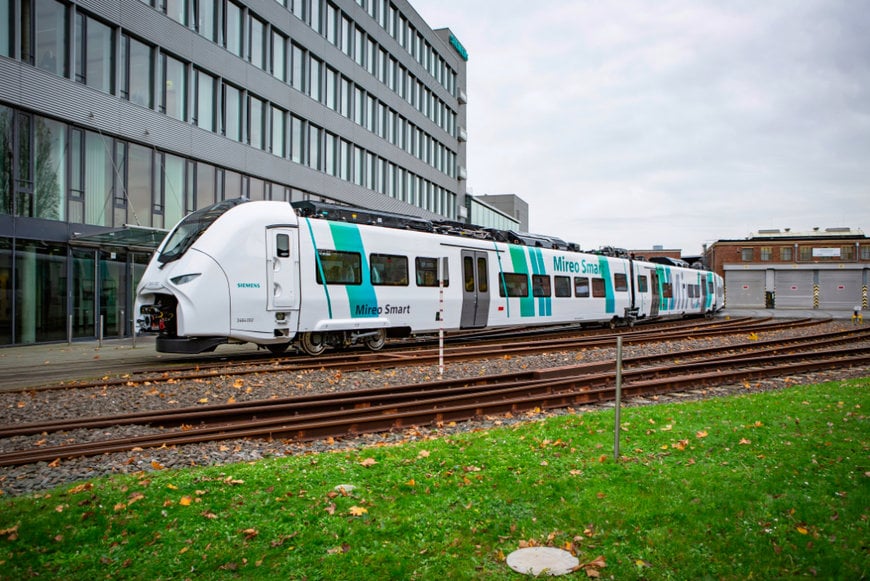railway-international.com
24
'23
Written on Modified on
SIEMENS MOBILITY: OFFICIAL ROLLOUT OF THE MIREO SMART
The first Mireo Smart is celebrating its official rollout. On the same occasion, Siemens Mobility announced it is expanding its options for alternative drives.

The Mireo Smart offers regional and commuter rail operators an especially efficient procurement process that takes only a maximum of 18 months from placing the order to the start of operations. This enables transport operators to react quickly and flexibly to growing demand and expand their fleets without lengthy delays. A standardized concept that allows certain configuration options not only reduces acquisition costs but also simplifies subsequent operations. The sales process, based on a data sheet with fixed conditions, is transparent and uncomplicated, making the ordering of trains easier. During this process, customers can also acquire a service contract with a spare parts and maintenance package to maximize the profitability of their operations.
With a seating capacity of 214 and space for 21 bicycles and two wheelchairs, the Mireo Smart provides the highest level of comfort and convenience for its passengers. The trains are also equipped with high-capacity air conditioning, on-board internet service, passenger information and security monitoring systems, and large TFT displays in the entry areas. The trains will be manufactured at the Siemens Mobility plant and development facility in Krefeld.
"The Mireo Smart is a response to the challenges of a constantly changing transportation landscape and the growing popularity of mobility by rail. We offer rail operators a preconfigured train that can be delivered within very short time and that guarantees high reliability and availability,” said Albrecht Neumann, CEO Rolling Stock at Siemens Mobility. “What’s new is that we are now also offering the Mireo Smart with alternative drive systems. By providing this environmentally friendly option, we are giving our customers even greater flexibility in adapting to the different requirements of their rail networks.”
www.siemens.com

